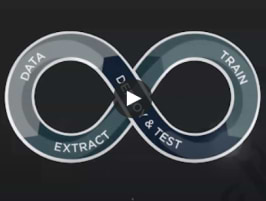JFrog uses AI and ML internally. Our Story Revealed! @ Silicon Valley Data Science, ML, AI Platform – 2021
3月 9, 2021
< 1 min read
JFrog uses AI and ML internally. Our Story Revealed!
Creating a validated and secured Data Science and Model Training for an Enterprise is a challenge that many of us face. In this talk, we will discuss how JFrog applied our sense of good DevOps practices, to automate these AI and ML processes, from ideation and into deployment and production. We will explore:
- Model-based Reasoning and Predictive Modeling, with a usable presentation of explainability data for the end-user
- Working with Time Series Data Algorithms – our comparative study (LSTM, Facebook Prophet, Holt winters)
- Explore the future of AI & ML for the Enterprise







